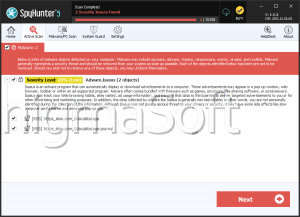Asus Ransomware
At the end of October 2019, malware researchers noticed a new ransomware threat lurking in the shadows of the Web. This new file-locking Trojan is called Asus Ransomware. When experts dissected this threat, they found that it is a variant of the widely popular Dharma Ransomware. The Dharma Ransomware variants have been pestering users online for a while, and cybercriminals continue to pump out more and more copies of this threat. Ransomware threats are seen as a quick and easy way to get some cash with very little effort, so it is not likely that we will see this trend die out any time soon.
By Using Encryption, the ASUS Ransomware Blocks Your Files
The exact infection vectors involved in the distribution of the Asus Ransomware are not known yet. Some experts speculate that the creators of the Asus Ransomware may be using one of the most common methods of propagating threats of this class – mass spam emails. Apart from a fraudulent message, which aims at manipulating the user with social engineering tricks, the email also contains a macro-laced attachment. If the targets get tricked into opening the attachment, they also will launch the threat in their systems. There are other methods of propagating file-locking Trojans, too, such as fake application updates and bogus pirated copies of popular software services. The Asus Ransomware will scan the data present on the compromised system as soon as it manages to gain access to it. Files such as .jpeg, .jpg, .mp3, .mp4, .mov, .pdf, .docx, .doc, .rar, .ppt, .xls, .xlsx and numerous other will then be targeted for encryption. The next step is the encryption process. The Asus Ransomware uses an encryption algorithm to lock all the targeted files. The newly locked files will receive an additional extension - '.id-
The Ransom Note
Then, the Asus Ransomware will drop its ransom note called 'FILES ENCRYPTED.txt, ' which is a trademark of data-locking Trojans that belong to the Dharma Ransomware family. The note does not inform the victim what the ransom fee, which they are expected to pay is. It seems that the criminals behind the Asus Ransomware want the user to contact them via email to receive instructions regarding the fee and how to pay it. The email address provided is ‘databack@qbmail.biz.'
Authors of ransomware are not someone you can trust. They will promise to send you a decryption key, which will reverse all the damage, but they tend to lose interest in cooperating as soon as they get their hands on your cash quickly. This is why it is much safer to download and install a reputable anti-malware solution and use it to wipe off the Asus Ransomware from your system.


